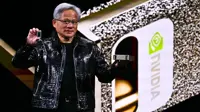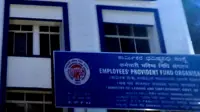Aadhaar case gets under way; petitioners say it alters Constitution
18 Jan 2018
Why can't the state argue that biometric identification is needed to plug leakages in social welfare schemes so that the benefit reaches to the person designated for it? This question from Justice D Y Chandrachud set the tone as a constitution bench the Supreme Court on Wednesday began hearing pleas against the all-pervasive use of Aadhaar.
 In one of the most keenly watched cases of recent times, a five-judge bench comprising Chief Justice Dipak Misra and Justices A K Sikri, A M Khanwilkar, D Y Chandrachud, and Ashok Bhushan heard the arguments of the petitioners, who maintained that the government's mandatory biometric identification project is in essence seeking to change a people's Constitution into state's Constitution.
In one of the most keenly watched cases of recent times, a five-judge bench comprising Chief Justice Dipak Misra and Justices A K Sikri, A M Khanwilkar, D Y Chandrachud, and Ashok Bhushan heard the arguments of the petitioners, who maintained that the government's mandatory biometric identification project is in essence seeking to change a people's Constitution into state's Constitution.
The petitioners opposing Aadhaar said the National Democratic Alliance's government's ambitious biometric-driven project ''sought to tether every resident of India to an electronic leash''.
The petitioners raised several objections on the scale of the project, its intent, and the actual legality of such an architecture which threatens citizens with the possibility of state surveillance.
"The core issue is that the design (of Aadhaar) itself is bad. It enables state domination," the petitioner's lawyer Shyam Divan told the court.
Justice Chandrachud countered, ''The state may say all we are trying to do is ensure that money is going where it ought to. If you are depending on social welfare benefits, equally states have countervailing interests to ensure that they reach the right people.''
Challenges to Aadhaar
The bench is hearing 28 petitions challenging Aadhaar's legal validity. These include challenges to various administrative orders that make linking of the 12-digit unique identity number to government services mandatory and also statutes such as the Income-Tax that make it compulsory to link the Aadhaar number to the PAN (permanent account number) issued by the income tax department.
The bench will also address the larger question of whether Aadhaar infringes on the right to privacy. A plea to this effect had led to a larger debate on the right to privacy itself that was settled in July last year with a nine-judge bench of the Supreme Court maintaining that the right to privacy is a fundamental right.
That judgement had a provision to allow the state to collect information so as to improve the performance of its social welfare schemes.
The petitioners include social activists Aruna Roy, Shanta Sinha and retired Karnataka High Court judge Justice K Puttuswamy.
Divan argued that Aadhaar ''alters the relationship between the citizen and the state'', while diminishing the status of the citizen. All rights, he said, have now been made conditional on a ''compulsory barter''.
''The barter compels the citizen to give up her biometrics 'voluntarily', allow her biometrics and demographic information to be stored by the state and private operators and then used for a process termed 'authentication,'' he said.
Chief Justice Misra echoed Justice Chandrachud, saying, ''Article 21 confers fundamental rights that include the right to education. They (government) may say that it (collection of biometrics) is being done for the purpose of ensuring that teachers and students come to school.''
Divan answered that the petitioners had a problem with the ''central registry which stores the data''.
Aadhaar raises several questions including ''whether the Constitution of India authorises creation of a surveillance state and whether the vulnerability of the database threatens national security'', Divan argued.
The architecture of the unique identity was such that ''throughout the day, there will be an electronic trail of movements and it is left with the Central government,'' he said. ''Why should central government know my movements?'' Divan added that such an architecture is ''unconstitutional'' and could create a ''surveillance society.''
The petitioner also argued that Aadhaar could lead to millions of people being denied access to essential services and benefits in violation of their human rights, as he pointed out that biometric details of almost 6.2 crore people have been rejected, mainly due to calloused hands and fingertips, wherein biometric data could not be recorded.
"These are not dishonest people or ghosts," he said. Even the Parliamentary Standing Committee report on Aadhaar points out: "...it has been proven again and again that in the Indian environment, the failure to enrol with fingerprints is as high as 15 percent due to the prevalence of a huge population dependent on manual labour. These are essentially the poor and marginalised sections of the society. So, while the poor do indeed need identity proofs, Aadhaar is not the right way to do that."
Divan also questioned the government insisting on expanding the Aadhaar scheme to newborns and children, saying that young kids are not old enough to understand the ramifications of such a scheme and give consent to a 'voluntary scheme'.
The Aadhaar project is run by the Unique Identification Authority of India (UIDAI) which collects personal and biometric data such as fingerprints, facial photographs, and iris scans, and issues 12-digit individualized identity numbers. Aadhaar was initially meant to be voluntary, aimed at eliminating fraud in government welfare programs and giving people a form of identification.
However, the Aadhaar Act of 2016 and subsequent notifications and licensing agreements increased the scope of the project, making Aadhaar enrolment mandatory for people to access a range of essential services and benefits including government subsidies, pensions and scholarships. It has also been linked to services such as banking, insurance, telephone, and the internet.

.webp)































